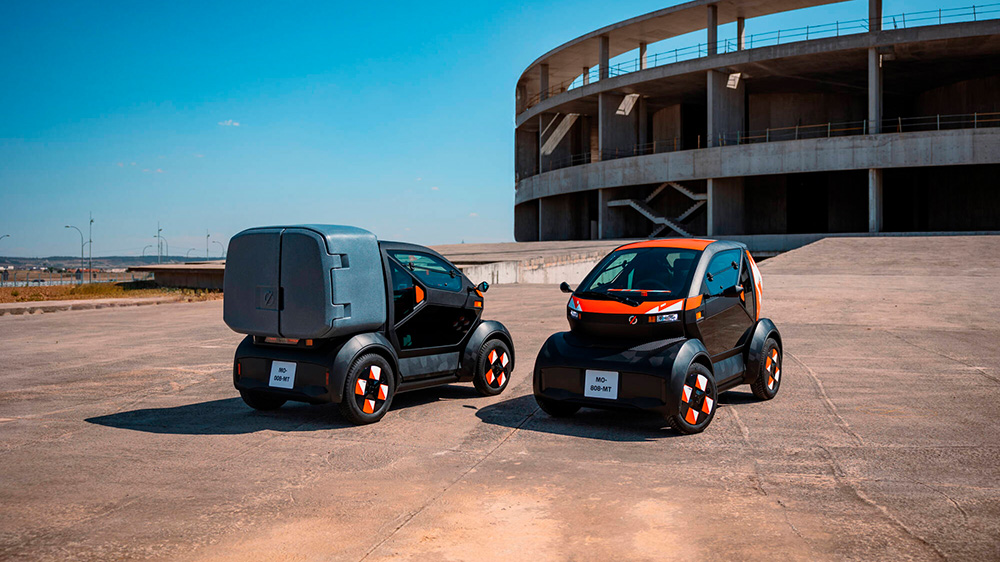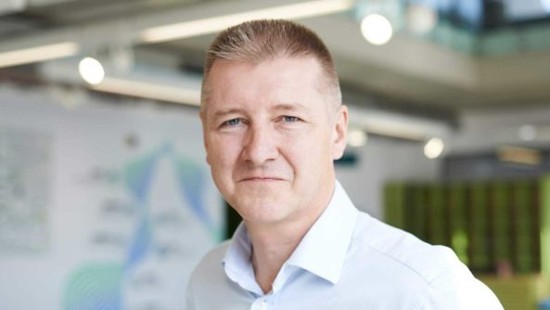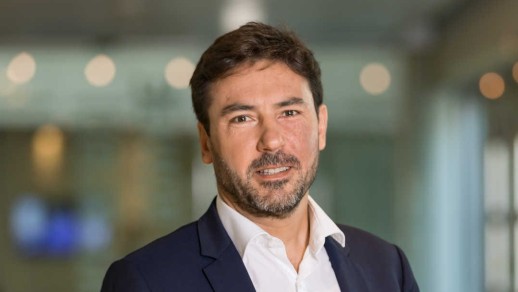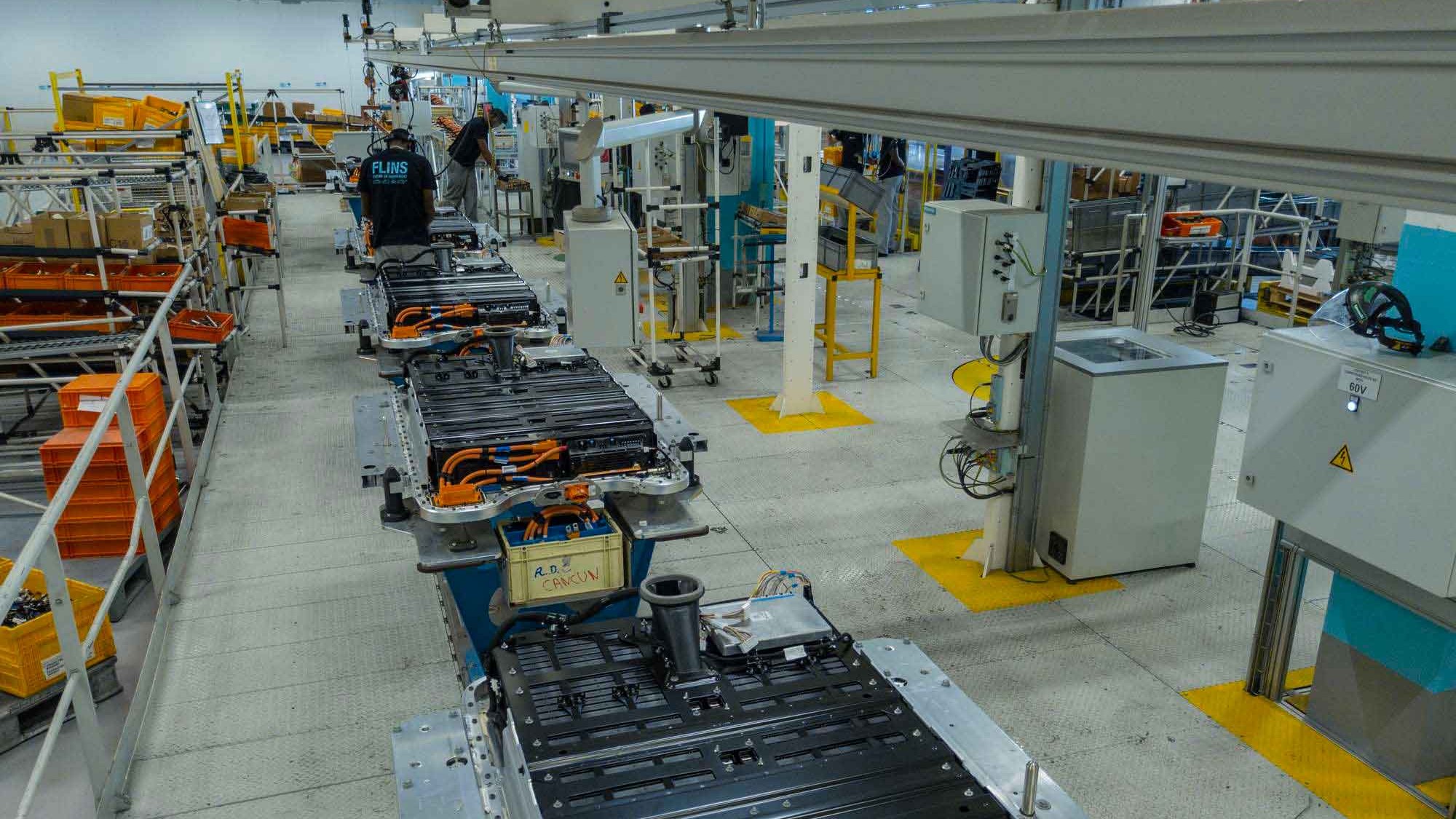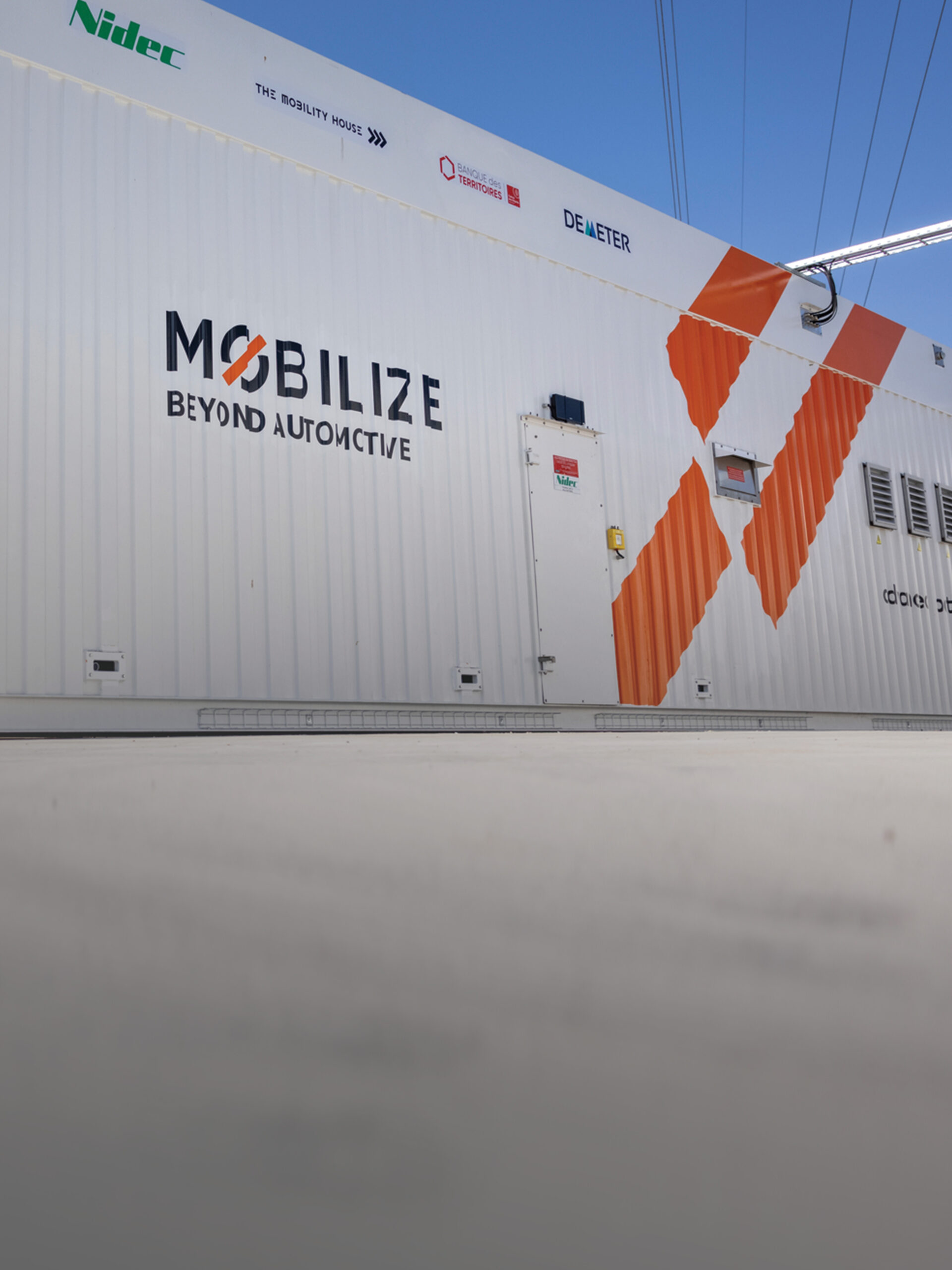What is the nature of the partnership between Mobilize and Connected Energy?
Matthew Lumsden: Connected Energy develops and deploys commercial E-STOR energy storage systems for customers with large-scale storage needs. In a nutshell, we take multiple electric vehicle batteries and link them so they can operate as a larger unit.
For more than 7 years, we have worked with Renault Group to repurpose electric vehicle batteries that have reached the end of their life Because at this stage, the batteries are still working extremely well and find a new life in stationary energy storage applications.
Amaury Gailliez: Our commercial and logistics partnership with Connected Energy aims to make the most of our batteries’ lifespan.
A battery has a first life within the electric vehicle. Its second life is an additional period of use that can last up to 10 years. This not only reduces the carbon footprint of each battery,.but also facilitates access to energy storage on a large scale.
What are the main benefits of using electric vehicle batteries for energy storage?
AG: Our batteries are engineered for very demanding usage, which is originally automotive use. Therefore, they are designed to be durable and reliable. When our batteries no longer operate at full capacity, they still deliver high performance in stationary use. It’s hard to think of a better use for them, given how essential energy storage will become to ensure the power grid is responsive and resilient.
ML: More and more electric vehicles on the road means more and more storage units for the future, which can be reused instead of buying and/or manufacturing new batteries. Meanwhile, the battery’s exacting design standards proposed by Mobilize guarantee that we’re offering very safe and reliable products. Linking these batteries together into integrated units, we can then use them to store renewable energy, balance the grid during peak load times, and so on. This suddenly makes energy storage much cheaper, more readily available and more accessible to all. Developing energy storage also means developing affordable, low-carbon electricity—which is good news for all sectors, including electric mobility! It truly is a virtuous circle.
Could you give us some examples of the benefits of this virtuous circle for end-customers of both Mobilize and Connected Energy?
ML: Integrating our supply chain with Renault Group and Mobilize’s makes it easier for us to provide our solutions to more and more customers. They can be utilities seeking to deploy storage solutions for their own consumers, or industrial groups who want to store power from their on-site generation facilities as a backup.
We also cater to companies with specific requirements. Electric vehicle charging stations, for instance, often need backup power because fast-charging multiple cars at once puts a strain on the grid. Organisations that need increased resilience to maintain critical functions in case of grid failure, such as water companies, are another example.
What these use cases all have in common is that they support a more reliable, responsive, sustainable and efficient power grid.
AG: As for Mobilize, working with Connected Energy opens the door to optimising production and logistics. The latter is a crucial link in the chain as batteries are very heavy, cumbersome, and involve all kinds of safety protocols to manipulate them. Having an integrated supply chain enables us to prepare batteries’ second life on a massive scale.
These efficiency gains will be passed on to buyers, who will enjoy a lower Total Cost of Ownership (TCO) of both battery and vehicle. This, in turn, contributes to make the vehicles more widely accessible and to putting more and more of these future storage units into circulation. In the end, it truly is a win-win-win for manufacturers, customers, and the environment.
What future developments do you expect to see in the use of electric vehicle batteries for energy storage?
ML: From a business perspective, I believe the growing availability of batteries will keep driving larger-scale energy storage projects as well as large numbers on industrial and commercial sites. For instance, we currently have E-STOR systems operating and being built with capacities of between 60 kW and 6 MW. But we expect to be deploying commercial 20MW/40MW systems by 2024. Ultimately, I expect energy storage will become a normal part of energy consumption for many organisations. Our objective is to maintain its commercial viability relative to other technologies.
AG: We are looking at truly enormous potential, that much is certain. Look at the growth of battery capacity: we started from cars with 22 kWh batteries, and soon we will reach the 100 kWh mark. Even if those were to lose 20% of their capacity during their first life, that is still a lot of power to draw on! The millions of electric vehicles that will take to the road in coming years represent millions of second lives to support a more efficient and responsive power grid.
Copyrights: Renault Communication Brésil, Connected Energy, Roland Mouron
